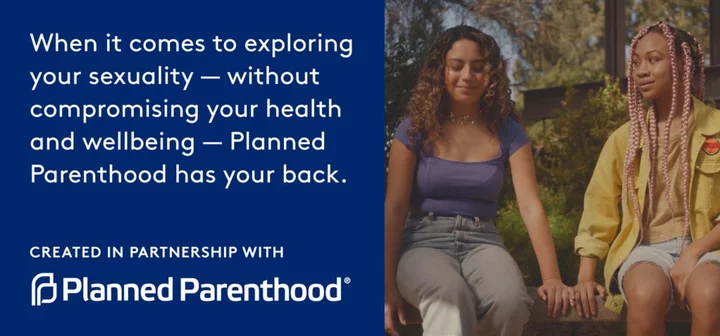We’re a post-monogamy generation in more ways than one: Our fridges house anywhere from two to 16 varieties of “milk.” We select television programs from 11 competing streaming services. Come dinner time, we opt between hundreds of regional cuisines, all available to us within minutes. We’re spoiled for choice, so to speak, and that ethos extends to our romantic proclivities, as well — which is to say, we’re living in the era of the open relationship.
“Sexuality operates in a part of the brain closer to thirst and hunger. It’s primal. It’s not always logical,” says Dr. Helen E. Fisher, PhD, biological anthropologist, human sexuality expert, and senior research fellow at The Kinsey Institute. “And open relationships allow for transparency and exploration around that urge without sacrificing your pair bond.”
Nevertheless, for a demographic largely brought up around “pair bonding” culture — blame reproductive instincts and social conditioning — non-monogamy is not an easy practice for many of us to adopt. “A great relationship takes more than attraction — it takes shared commitment and work. And all parties have to be willing to put in the effort,” says Sara C. Flowers, DrPH, vice president of education & training at Planned Parenthood Federation of America.
It’s for this reason that, in spite of its more recent popularity, non-monogamy is still in its beta phase. So, in order to help alleviate some of the uncharted anxieties that accompany redefining the nature of your partnership, we’ve built out a primer to add to the ethical non-monogamy oeuvre. Ahead, we’ve consulted sexual health counselors, relationship psychologists, and folks in successful non-monogamous partnerships to help assemble a beginner’s guide to practicing non-monogamy — without sacrificing your romantic well-being in the process. Here’s where to start.
Broach the topic in a safe, comfortable space
Perhaps this goes without saying, but a prix fixe meal out on the town may not be the ideal setting for an initial conversation about the terms of your monogamy. It’s entirely possible that your partner may need space to think, to react, to emote. They may need to cry, to yell, to take a moment away from you in order to gather their thoughts. So be sure to choose a setting that’ll allow them the freedom to indulge that.
“Maybe you write your partner a really long email so they have time to chew it all over on their time before you discuss,” suggests Dr. Fisher. “Maybe you address the matter at home. If you have kids, maybe you make sure they’re off with a babysitter.” You know your partner. You know the ways they process, so make your arrangements accordingly. If this is going to work, it’s going to require a lot of difficult communication, so make sure you’re starting out on the right foot.
“If you’re bringing this up out of the blue, it’s also important to make sure your partner knows that you really care for them and that you’re not abandoning them,” Dr. Fisher adds. “This is not the first step out of the relationship, it’s a way of bolstering a partnership you still want to prioritize.” Simply put, you’re not asking to be single — you’re looking to test out modes of exploration that’ll (theoretically) help you continue to choose your primary partner every day.
Make sure both parties are properly on board
“In the long run, this is not going to work unless both people actually want to do it,” says Dr. Fisher. “So, the first thing you have to do once you’ve started the discussion is figure out whether your partner really wants to give this a shot, or whether they’re just trying to please you, because if they’re compromising for your sake, it’s going to fail.”
As she explains it, human beings are not animals that share well. Sure, we all tend to experience varying levels of jealousy — perhaps innately, perhaps based on previous relationship or family trauma — and given that human beings have been practicing forms of monogamy for reproductive sake for years, it’s inevitable that unlearning that mode of loving is hard. You have to respect that it won’t appeal to everyone, that it may even be offensive to some.
“Consent, in the context of non-monogamy, means being clear with your partner(s) about what you want, and where your boundaries are,” adds Dr. Flowers. “Consent should always be Freely Given, Reversible, Informed, Enthusiastic, and Specific (FRIES). In practice, that means everyone involved must genuinely want to be in an open relationship. They should know exactly what they’re getting into, and they should understand that they can change their mind if things feel uncomfortable.” That said, people are not static. Part of upholding the contract of consent requires checking in with your partner frequently and re-establishing the baseline of your arrangement.
Outline the terms of your agreement
There is no one-size-fits-all approach to non-monogamy — which is to say, you’ll need to define all the terms of your particular agreement together. Are you interested in having romantic relationships with secondary partners or is the arrangement purely sexual? As a couple, do you want to tell your friends about the arrangement? Your children? Are folks in your immediate circle off limits? Are you allowed to bring new partners home? How much will you share with one another regarding your exploits?
“‘Rules’ is a big word, but there are definitely considerations we take for each other,” says Jackson*, 24, who has been in a non-monogamous relationship for nearly four years. “One major consideration is sharing the experiences we have outside of the relationship with each other. If there’s nothing hidden, the waters are less murky. And it can be fun and even erotic to share stories of our outside entanglements with one another.”
Of course, it’s likely that your terms will change as your experience unfolds in actuality, rather than in theory. Dr. Fisher even suggests outlining your agreement on paper, so you’re able to revisit your “contract” at will. “I’ve worked with clients who prefer swinging because you’re always engaging with secondary partners together,” says Dr. Fisher. “And for other people, it’s all about determining whose money you spend on dates, or which nights are off limits for secondary partners, or what spaces, beds, restaurants, cities are primary partner territory, only.”
No two non-monogamy agreements are exactly alike — and that’s why it’s important to give this stage the proper time to breathe. Go back and forth, consult friends about their experiences, read internet forums, watch documentaries, open your brain up to the absolutely limitless quantity of potential approaches to this breed of intimacy. “Folks will rarely tell you about the inordinate amount of time it takes to discuss all this — be prepared, come at it with endurance, leave no stone unturned,” adds Dr. Fisher.
Prioritize your sexual health
Unlike with being single, exploring your sexuality while maintaining a primary partnership means that one person’s actions can affect both parties’ sexual health. You’ll need to agree on your stances on contraceptives, birth control, regular STI tests, and plenty of other issues regarding your collective sexual well-being.
“Communication, empathy, and safer sex practices are important in any romantic relationship,” says Dr. Flowers. “All parties have to be willing to put in the effort. Have open and honest conversations about sex. Take care of your sexual health. Talk to your partner about how you’re going to protect each other against infections and unintended pregnancy. Get tested for STIs regularly.” Ensure that you and your partner have aligned on your policies re: condoms and other forms of birth control. Maintain standing appointments to get tested. Make sure you’re prioritizing one another’s health, even while exploring your sexuality.
Check in with one another regularly
“For us, the rules are always evolving. I think that’s one of the biggest challenges for me in being non-monogamous,” says Rachel*, 31 who has been in an open relationship with her girlfriend for three years. “Knowing that what felt okay last week might not work this week, and having the confidence to advocate for yourself and being able to listen to what your partner needs are all things that have become huge aspects of our relationship.”
Given that the nature of the arrangement is new, it’s likely that you’ll have plenty of cause to revisit your agreement, and the ways it’s affecting you both as a couple and as individuals. After your initial discussion, Dr. Fisher recommends setting a date for regular check-ins, whether it’s a weekly touch base or something far less frequent. That way, you’ll have designated time set aside to litigate without allowing the subject of non-monogamy to leak into all other spaces in your life.
Remember, while indulging in forms of secondary partnership, it’s important to make sure you’re still nourishing your primary relationship with all the affection and attention it deserves. Be it a weekly date night, regular vacations, or regular home-cooked meals, factor in time for the two of you as a couple. “Non-monogamy requires so much talking: talking about how you’re feeling, talking about how they’re feeling, talking through past events, talking through hypothetical scenarios,” adds Rachel*. “It can feel like all you do is have hard relationship conversations. It’s important to have those, but make sure you’re also just shooting the shit and getting to enjoy each other.”
Give yourselves an exit strategy
In exploring the thresholds of non-monogamy with your partner, you do indeed run the risk of one or both of you determining that an open relationship simply isn’t working — or at the very least, isn’t serving the sanctity of the primary partnership. And according to Dr. Fisher, if you decide to end the arrangement, you need to decide as a couple. “You need to commit, together, to going back to a pair bond,” she says. “And that means also communicating with any other secondary partners in your life that you’re refocusing on your primary partner, and your outside relationships will need to come to a close.”
If you and your partner are on different pages about closing your relationship, it’s a hard topic to broach, so you’ll need to put some tools in place to make sure you both have the freedom to tap out, whether that’s a timeline on attempting non-monogamy before making a decision together, or a safe word, or a promise to consult an expert to help you facilitate the transition. Utilize resources like your local Planned Parenthood chapter to help navigate obstacles when you feel you’re out of your depth.
Moreover, for couples reinstating monogamy, Dr. Fisher advises steering away from language around “going back.” Partnership is about moving forward. Regression is not an option. Instead, you’ll want to set a precedent for new ways of nourishing your pair bond. “Novelty drives up the dopamine system in the brain, and it can trigger feelings of romantic love or help sustain them,” she explains. “So be honest with your partner about things that make you feel complacent. Talk about ways of injecting your relationship with novelty that don’t include other partners. Continue to build a new partnership with this person you love.”
* Names have been changed to protect the identity of the speaker
Check out Planned Parenthood.org for information on healthy relationships, and broaching conversations around consent and STIs with your partner.









